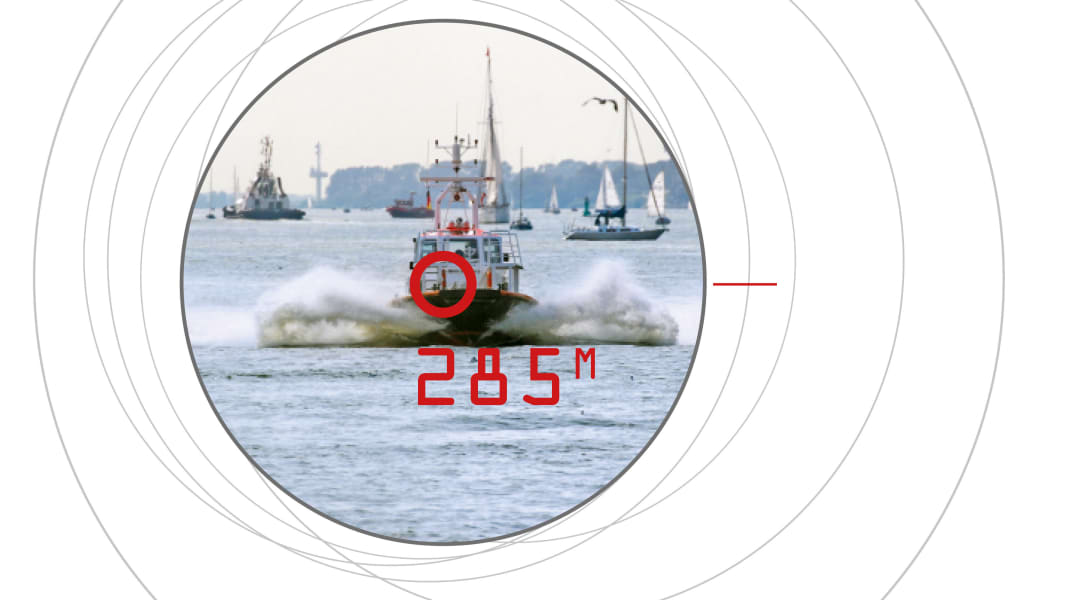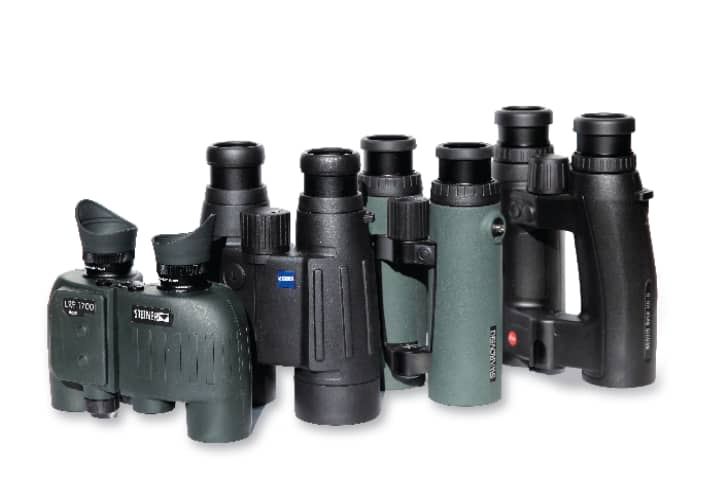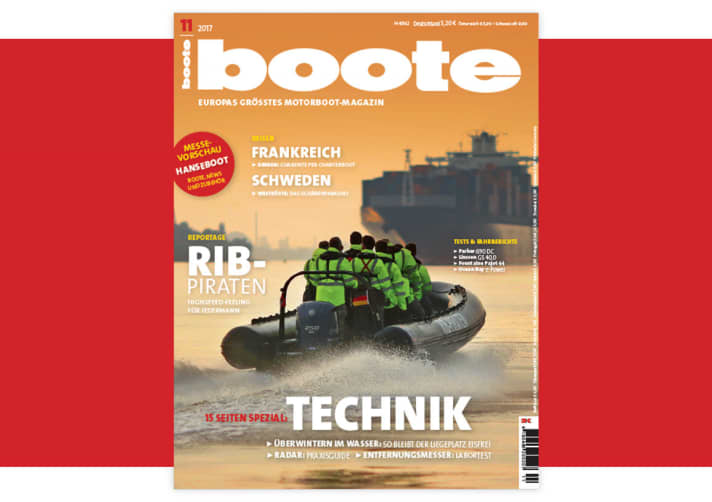
Estimating distances correctly is not easy, especially on the open sea. This is one reason why laser rangefinders are so popular with boaters. They showthe distance to the intended target at the touch of a buttonand thus offerCertainty in control and navigation.
Even on somewhat monotonous canal journeys, such a helper can be used topass the time sensibly and, for example, determine the exact distance to the next lock or bridge.
If you don't want to carry two optical devices around with you, you can opt for the binoculars and rangefinder combination that is the subject of this test.
The devices contain a laser measurement module whosefunction is based on a runtime measurement. Put simply, the module measures the time it takes for the emitted laser to reflect off the targeted object and return to the starting point.

We are familiar with the technology from road traffic, where law enforcement officers hide behind bushes to catch speeders with the so-calledRadar gun chase. A laser also works here, only the device does not reflect the distance to the object, but determines two distances based on several measurements and calculates a speed from the time interval between them.
Optical rangefinders in binoculars are kept simpler and are used for observation on the one hand, but can also be used at the touch of a button on the other.Distances up to about one nautical mile measure and display.
We tookfour of these new combination appliances under the magnifying glass with eightfold magnification suitable for boats. We started with theLRF 1700 from Steiner Optik. The name comes from the maximum measuring distance of 1700 metres. The display is shown in the right-hand beam path of the binoculars as reddish shimmering digital numbers. These can be adjusted to the surroundings in four brightness levels.
You can read the full accessories test in the October issue of BOOTE, which will be available in stores from 18 September. Subscribers can read it sooner, of course!

